For a while, there was doubt whether the road bike should come with me to Cortes de la Frontera because after all, this was supposed to be a workation and not a cycling holiday in Andalusia, right? But from the moment I passed Seville and drove into the Andalusian mountainous landscape, I knew cycling was going to have a prominent place in my work week.
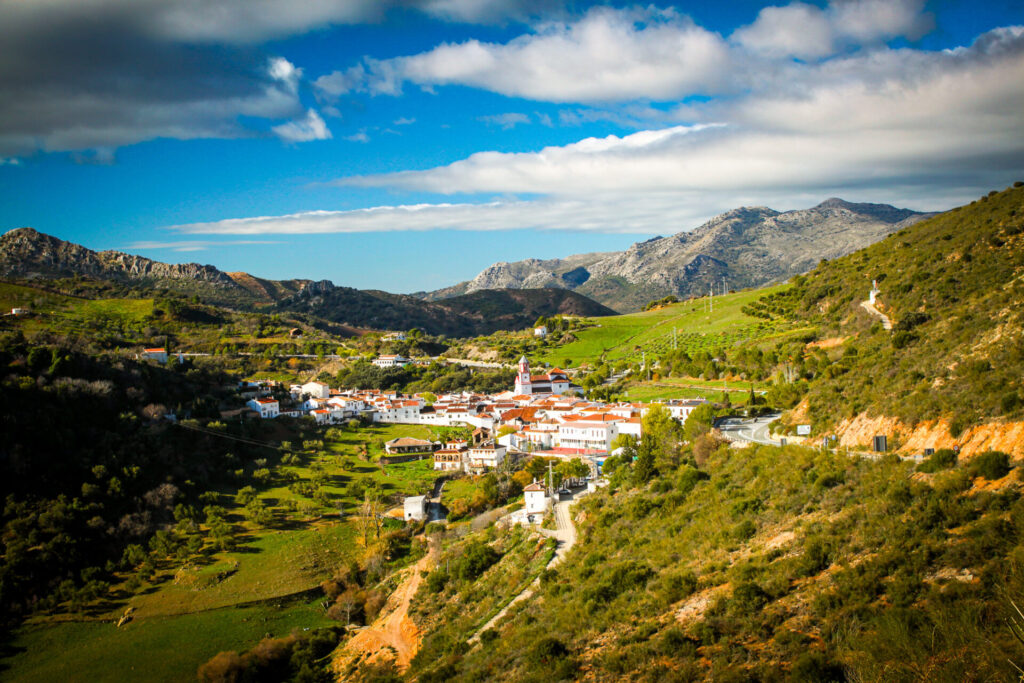
Text and photos: Jurgen van Teeffelen
29 December 2023
'Crazy!" I shout. The loud tone is unnecessary, my wife is sitting next to me in the car. I can't help it. Well, it is my first reaction when I suddenly see two cyclists looming on the side of the A-7. I hadn't seen those coming! It's 5.30pm and the already busy coastal road between Marbella and Estepona has become even more hectic because of the Spaniards heading home for the last weekend of the year. They do so at the risk of their lives, at least that is my assessment. The road meanders unpredictably in front of me, the recommended speed constantly alternates between 70 and 100 but nobody sticks to it, and finally, I am just unlucky that the sun that so finely accompanied my jaunt to the coast today is setting right now and almost blinding me.
Why?
'What madman goes cycling here,' is therefore my logical thought when I see the two riders. From my mirror, I see that the pair -forty guy in the lead, frail lady behind - are dressed in Intermarché Circus Wanty's jersey. They look pro. Are they indeed pro riders? Who have thought of 'let the rest of the peloton go to Calpe during the Christmas holidays, we are going -just like all those professional footballers do- to another Spanish coast'?

Away from the coast
Shaking my head, I drive on. Ten more minutes and then I will be out of this hustle and bustle. Then I take the turn into the interior. Those Wanty cyclists should do the same! To enjoy cycling, they need to get away from this coast that is filled with hotels, shopping centres and apartment complexes. Inland is so much more peaceful and beautiful. There it is green and hilly. So that is where the perfect cycle paths are.
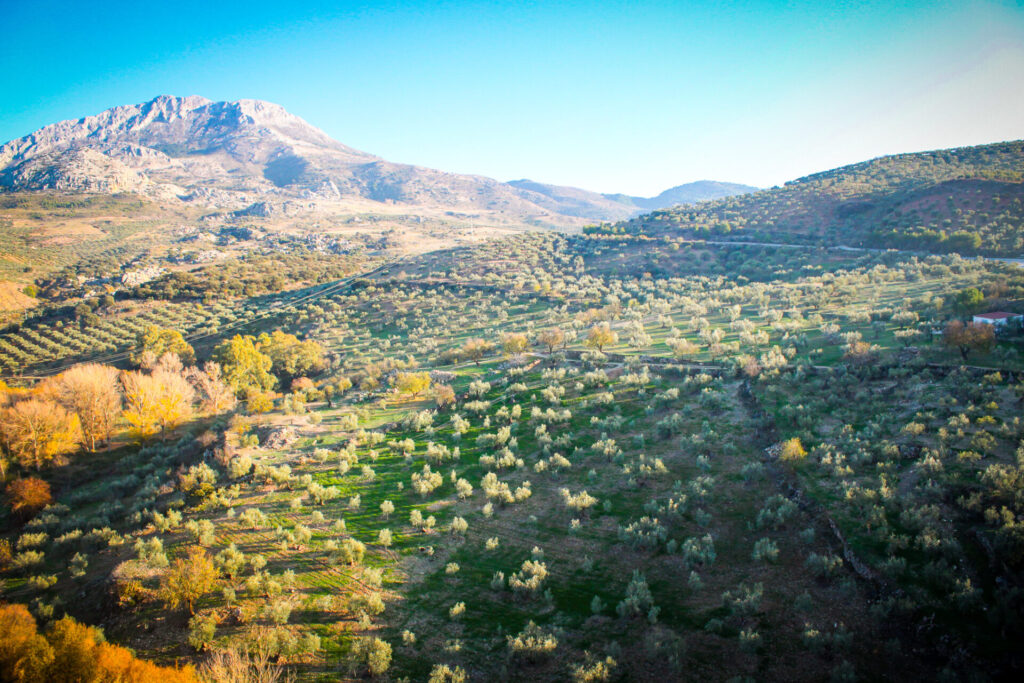
Inland
Inland are also the characteristic white villages, the 'pueblos blancos'. Cortes de la Frontera is one of them. 'It is a municipality in the Spanish province Málaga in the region Andalusia. In 2007, the village had a population of 3738.' That was all there was to read on Wikipedia when my wife and I decided at the beginning of 2023 to spend our next winter exactly here. Two months away from the grey, foggy, wet Netherlands that managed to make us increasingly moody in recent years. We were going to do for once what Dutch pensionados and top athletes had been doing for much longer: spend the winter in southern Spain.
On to Cortes
And so in early December we had driven to Cortes by car in three days. With laptop, dog, clothes, books, walking shoes...and yes, even the racing bike. Because -as I told my wife- we also had to do a quick errand in the village now and then and a bike with gears was very handy. And -as I kept to myself- maybe I could free up some space in my diary to go for a longer ride once in a while...
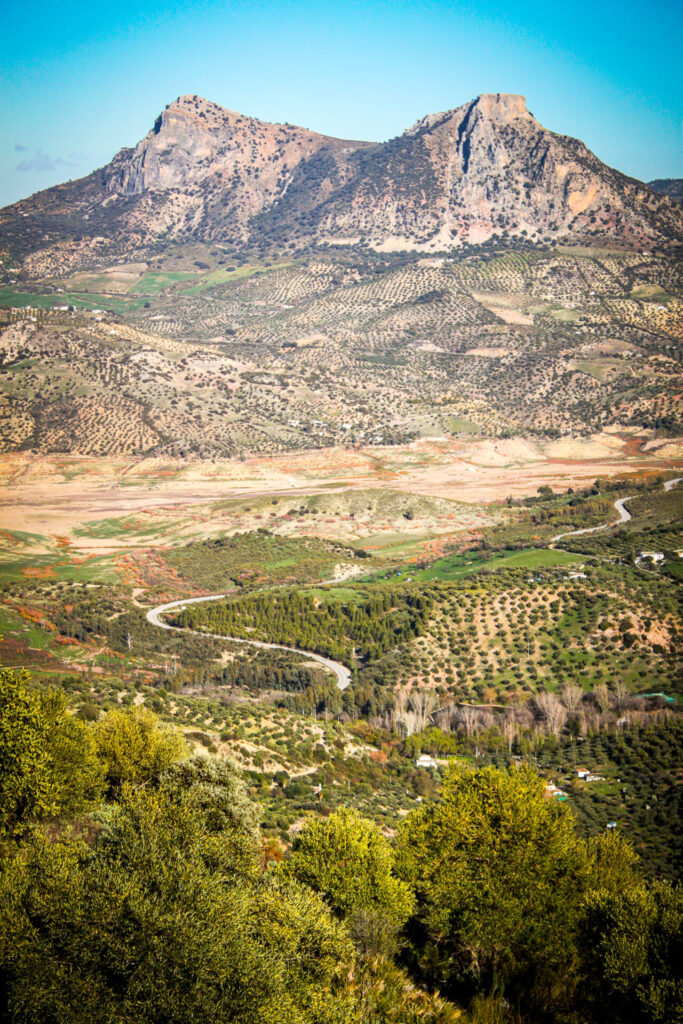
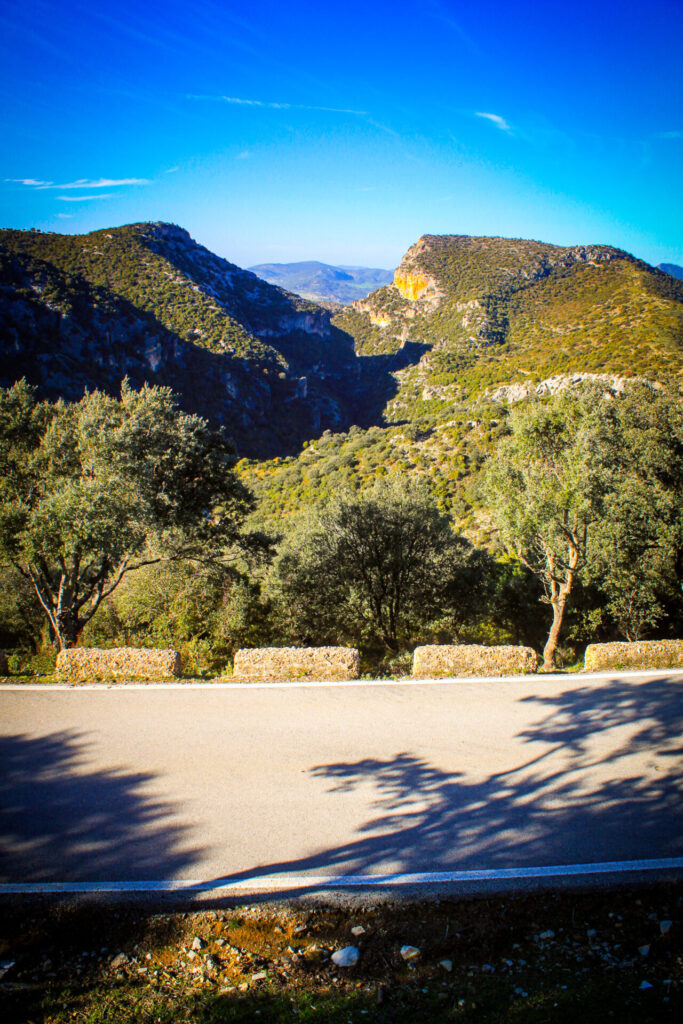
Nature parks
It turned out not to be a crazy thought at all. Because with mostly days with lovely sunshine and afternoon temperatures around 15 degrees, I quickly opted for the Spanish format of my working day. Only in doing so, I did swap the siesta for a bike ride. With such challenging surroundings, I had no choice either. For Cortes de la Frontera -at 600 metres altitude- is located in the vast area of Serranía de Ronda, where it is hemmed in to the north by the Sierra de Grazalema Natural Park and to the south by Los Alcornocales.
Beautiful landscape
The result: a varied landscape of mountains, forests and valleys, providing a mix of mighty views, winding roads, rugged gorges and the aforementioned white villages. Those villages are easily half an hour apart -and with the necessary altimeters- which makes making a short round trip difficult; fortunately, siesta time in this part of Spain usually lasts a couple of hours.
From Cortes, I could cycle in three directions: north towards Ronda, east towards Gaucin and south-west towards Ubrique. Regardless of which route I took, nowhere was it flat and never did the scenery disappoint. The first part I usually went down into the valley and then climbed up to reach another green valley with here and there a white village stuck against the hills. The impressive views always paid off.
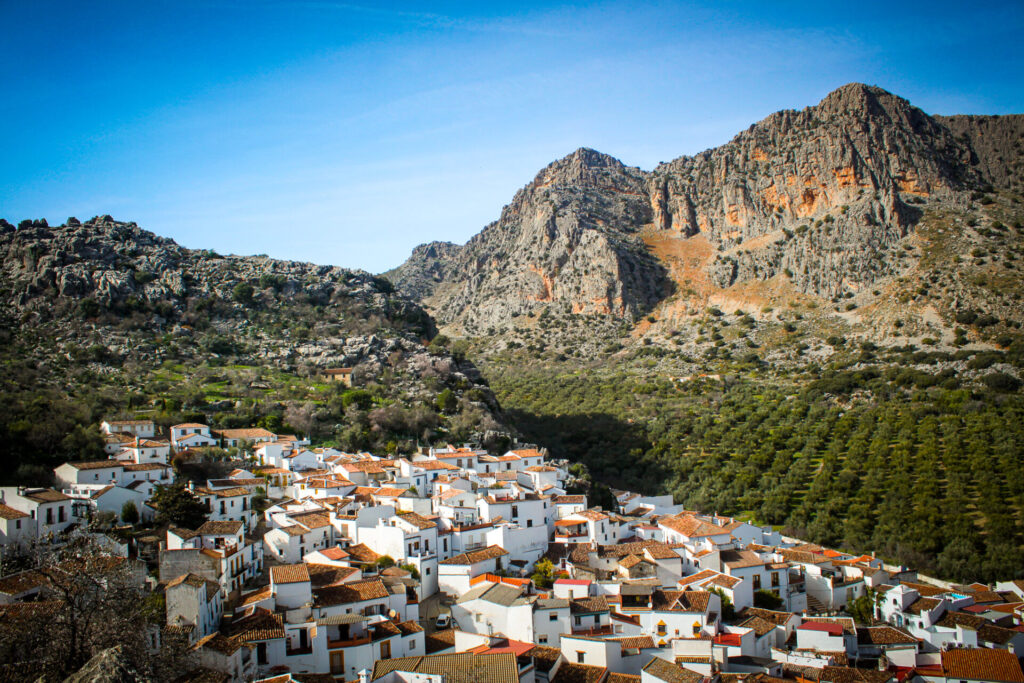
Farewell tour
In the last week of my stay, I headed out for half a day for my 'farewell tour'.
31 January 2024
'Buenos dias!" I call out to the group of three cyclists staring at me on the main street of Cortes around eleven. I can understand the latter: as I pass them in my cycling shorts, they are still quite wrapped up themselves. After two months here, I know better. While it is often still quite cold in the morning (around freezing even), the mercury rises quickly once the sun has appeared. The forecast for this afternoon: 18 degrees, cloudless. Lovely cycling weather, in other words.

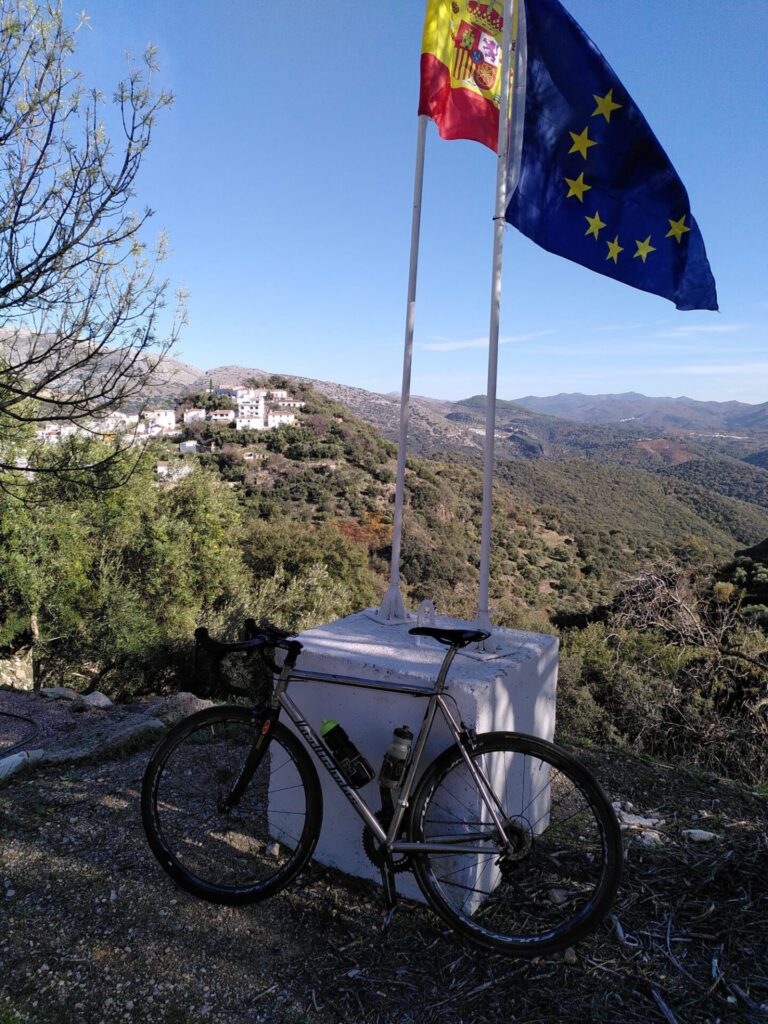
Bullfighting
I pass the intimate Plaza de Toros, where, to my dismay, I witnessed 'live' soon after my arrival that bullfighting is still a living tradition in this region. As is hunting. Fortunately, just now at the Meson Los Monteros ('the hunters') I did not see a convoy of 4×4 cars with carts behind them in which loudly barking dogs were crammed together. The coast therefore seems safe today; earlier I experienced having to turn around from my planned route because the road was blocked by a shaggy Spaniard in green clothes and a shotgun in his hand.
I drive out of the village along the palm-fringed main road that turns into the provincial MA-8401 to the north. On the right, I look out over the valley into which the Guadiaro river flows to the coast; next to it is the railway line that seems to run from Ronda to Marbella, but on which I have never seen a moving train. To the left reveals the karst landscape that typifies the region: impressive limestone cliffs that have formed into jagged shapes over the course of history through slow weathering. In all shades of grey, perhaps more than fifty.
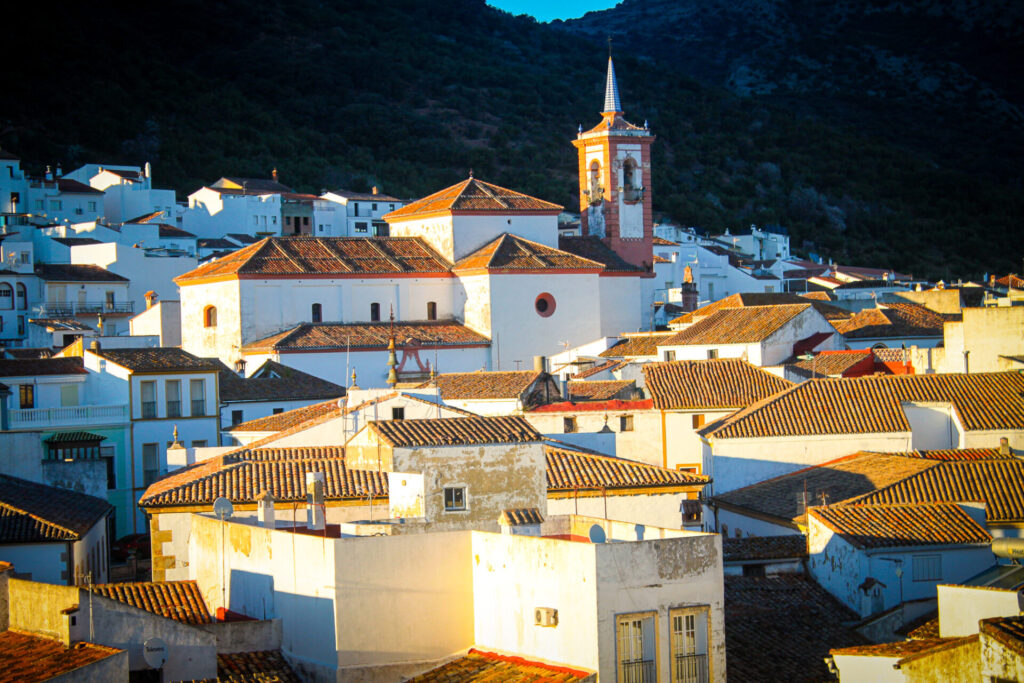
I ignore the turnoff to Jimera de Libar today. This white village, via a climb through a narrow gorge, forms the gateway to a vast valley in which many villages start with 'Bena': Benadalid, Benarrabá, Benalauria. Bena means 'son' in Arabic; the villages are named after the sons of the Moorish rulers at the time. I myself descend to Benaoján a little later and, in the wide, flatter landscape beyond, see the outline of Ronda, the region's largest and most touristic city.
On to Montejaque
However, I cycle to picturesque Montejaque for a stop at the central village square, the Plaza de la Constitución. As usual, it is home to the ayuntamiento (town hall) with the flags of the European Union, Spain and Andalusia fraternally side by side on the facade, a large church built in the 16e century took the place of the mosque, a fountain and a bar with a terrace where the sun has free rein.
Coffee break with cortado
After a cortado, I cycle back out of the village via the main street past the historic washing place. Soon the road winds through a spectacular gorge. You can descend on foot here to the start of the Hundidero-Gato cave system, a complex of underground passages through the limestone that can only be explored by swimming most of the year. A little further on, I imagine myself in a smaller version of Monument Valley because of the sweeping views and unusual rock formations in the landscape. Variety is the watchword of this route, it becomes clear to me.

80-kilometre road - so busy
This is evident when I turn onto the A-374 a little later. It is an 80-kilometre road where I am immediately overtaken by a few cars. It won't get much busier today, though, because after half a kilometre I turn off to Grazalema. This quiet road climbs gradually and fields with groups of bleating goats slowly turn into dense oak forests. Cork oaks do particularly well in the region: many tree trunks have the cork bark removed to half their height. A little later, I see men in orange vests busy removing and collecting the bark. What are they actually doing with it, I think while cycling. How creative with cork can you be? I resolve to at least never again buy a bottle of wine with a screw cap.
I pass a triangular sign with a deer on it. 40 km is written underneath. Over the next forty kilometres, do I have a chance of seeing a deer jumping across the road? Would be nice! Apart from the goats, it is still mainly birds of prey that I have observed while cycling. Especially vultures that suddenly circle above you at a close distance; it's a good reason not to completely kill yourself while cycling.
Up and down
The road keeps going up and down. If I go down a bit, I am bound to have to climb as many altitude metres again a kilometre further on. Slowly, the forest opens up in front of me and a new landscape backdrop appears. Into view: exuberant green with impressive limestone peaks belonging to the Sierra de Grazalema Natural Park. Against the rocks I can already see the white houses of the village, a fine aiming point this way. I look at the sky: sleek blue. It is very unusual. In fact, Grazalema is known as the wettest place in Spain. With over twice as much rainfall per year as in the Netherlands, you know enough. This year is different: the amount of rain the region is experiencing this winter is mouthwatering. It worries residents. This became clear to me when I spoke to the neighbour earlier. She is the hairdresser and baker in Cortes. My enthusiasm about the lovely spring weather did not fall as well with her.
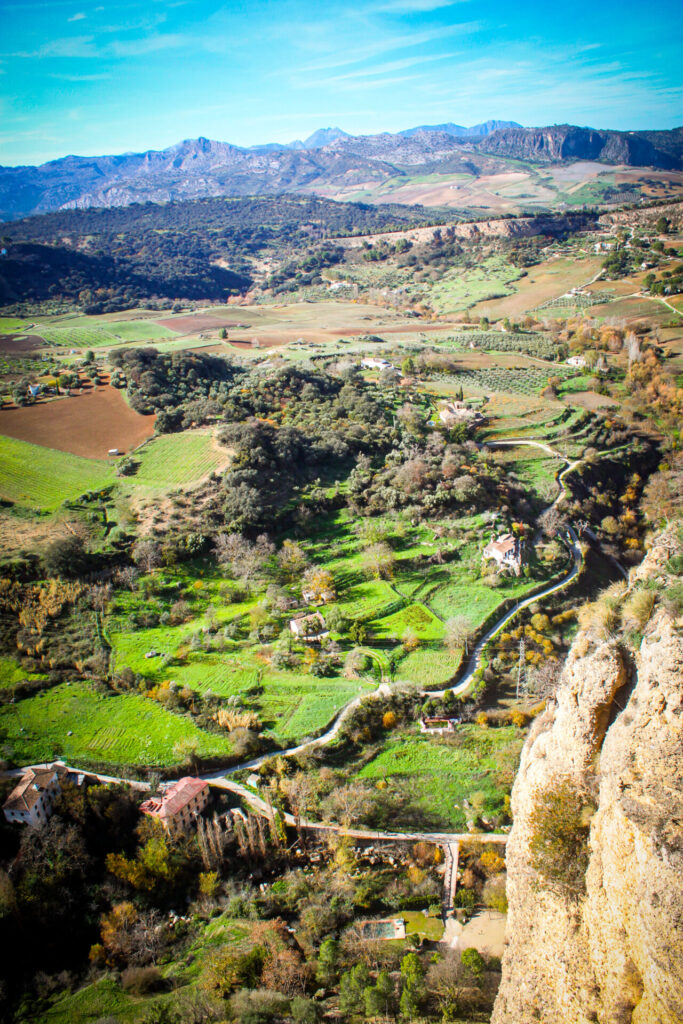
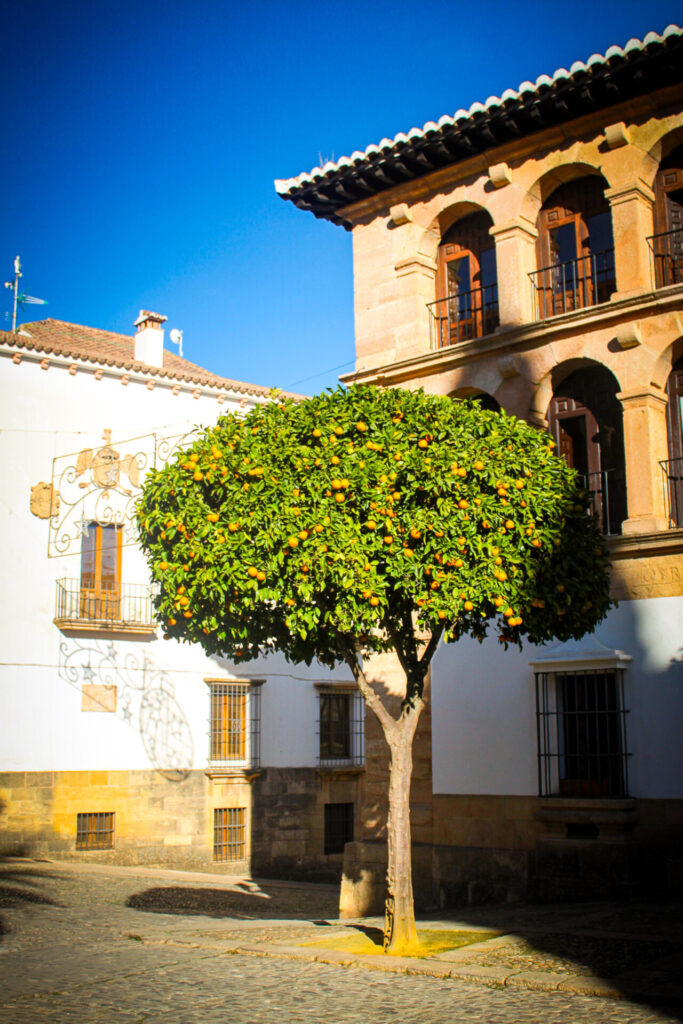
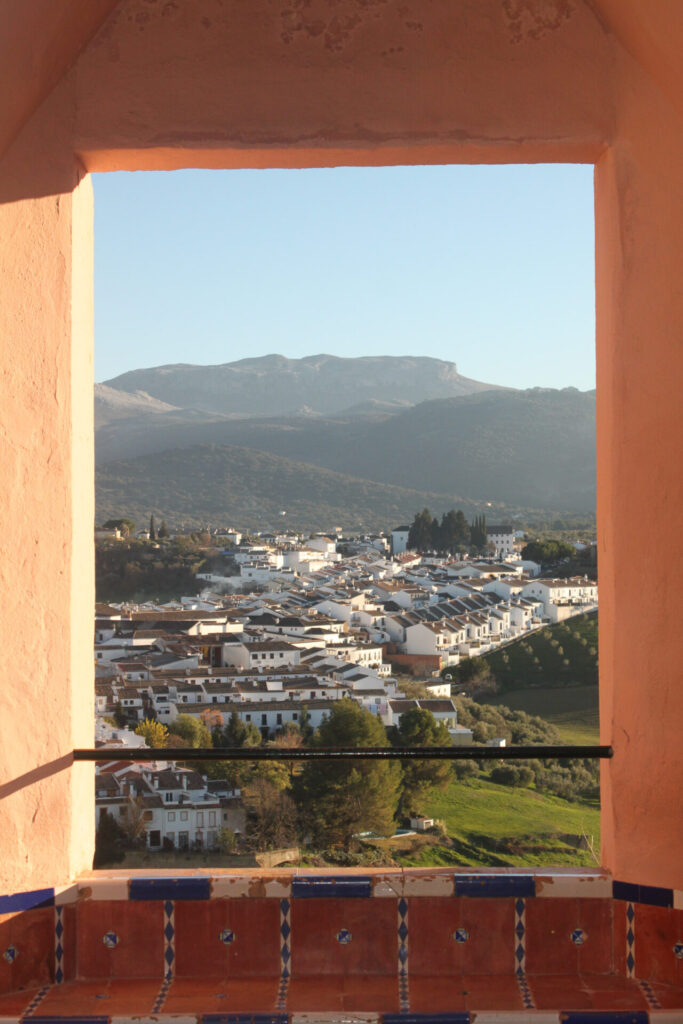
Grazalema
Entering Grazalema, I pass a group of campers in a large roadside car park. Grey heads on camping chairs wave at me. A quick look at the number plates: France, Germany, Belgium. No compatriots by the looks of it. Grazalema is one of the most beautiful villages in Spain, I read on a sign. It explains the presence of motorhomes and tourists at Plaza de España further along. Beautiful it certainly is. The 18e century Our Lady of Aurora church is very beautiful. The narrow streets, the flower pots with bright contents on the facades of the white houses. Think of the clinkers under my tyres and finally the view of the stately peaks that surround the village.
Just to 1,000 metres altitude
Between Grazalema and Villaluenga del Rosario, the road rises slightly. Further on is the highest point of the route today, just below 1,000 metres. The yellow and purple flowers in the green grass, the small farms, the countless grazing goats. I imagine myself in a Swiss chocolate advert. I am passed by a pick-up truck. In the loading bay I count about five sheep. I know where they will be delivered: For Villaluenga is the village of Payayo cheese, which is made from both goat and sheep's milk. The cheese is also on the menu of the local restaurant 'Los Caños', where I settle down a little later on the terrace for lunch. However, I opt for the 'estofado de jabali', a wild boar stew with fries. After two months, I have realised that the food in this region is not very refined but very tasty. At the other tables, the wine bottle is already going round exuberantly; I stick to a coke.
Bueno!
The descent to, respectively, Benaocaz and Ubrique -at 350 metres the lowest point of the route- is pleasantly manageable. No overly exciting hairpins, no oncoming trucks cutting you off, no unexpected pebbles or holes in the road, just great cruising! In Ubrique, I actually end up in the late afternoon traffic. It takes some getting used to cycling after hours in a rural environment in a city with over 15 thousand inhabitants. Judging from the internet, Louis Vuitton and Gucci (or their descendants) also seem to regularly stay in Ubrique because of the tanneries located there. No idea whether they take their bikes there but they will have to work hard: after the village, a six-kilometre climb awaits with over 400 metres altitude. It is no punishment. As I watch one vast valley slowly disappear behind me, a little later I cycle into the next. One natural park (Sierra de Grazalema) is exchanged for another (Los Alcornocales), the province of Cadiz for the province of Málaga.
Unsuspecting bulls
I cycle past meadows with groups of brown-robed bulls looking at me unsuspectingly. I ride past orchards where barking dogs on a chain watch over the olive and almond trees. A little later, the karst landscape shows itself again in its full glory. I pass the turnoff to the picturesque village of El Colmenar, which lies some ten kilometres away in the valley of the Guadiaro river. It is reached via a pretty winding road through a cork oak forest where large groups of wild boar dwell, I know from a previous bike ride. Turn right, turn left and then a familiar village with white houses appears on the horizon. I am back in Cortes de la Frontera, I am home again. After dismounting, I look at my bike and realise...taking it with me to southern Spain was an excellent decision!
Routes - Wintering in Andalusia
You can find cool routes via our komoot page. Want to know more about cycling in Spain? Then read our entire 'cycling in Spain' page

